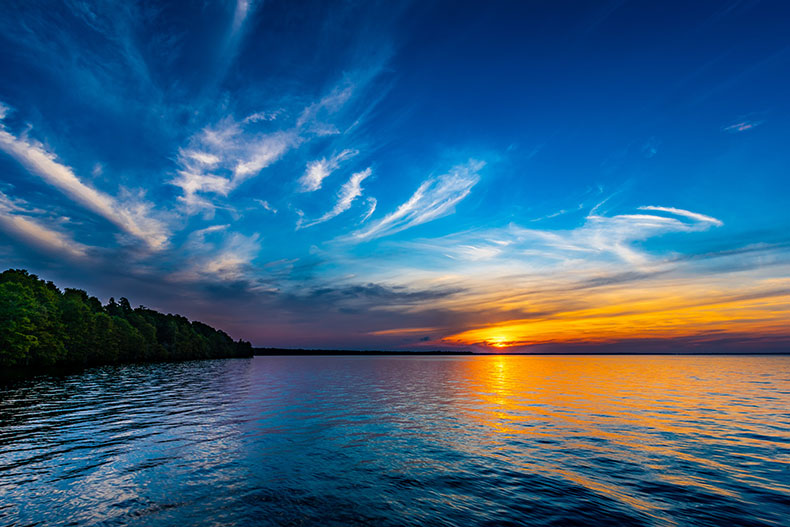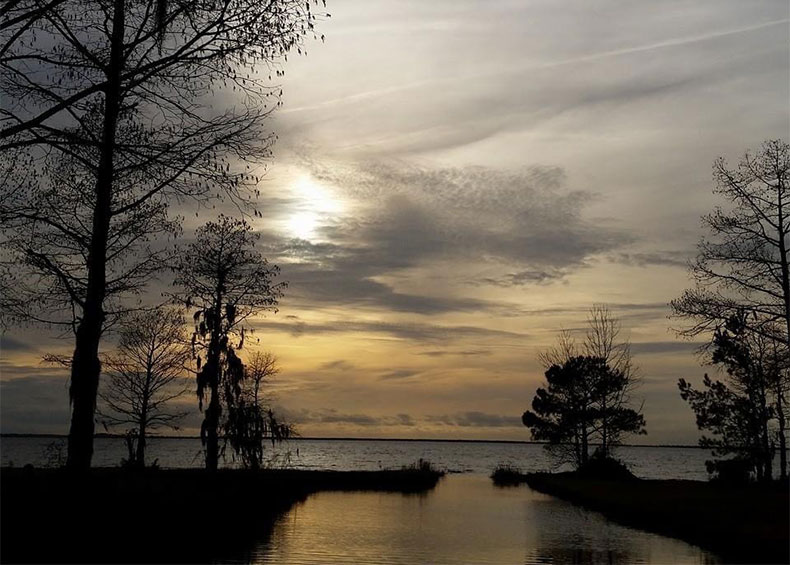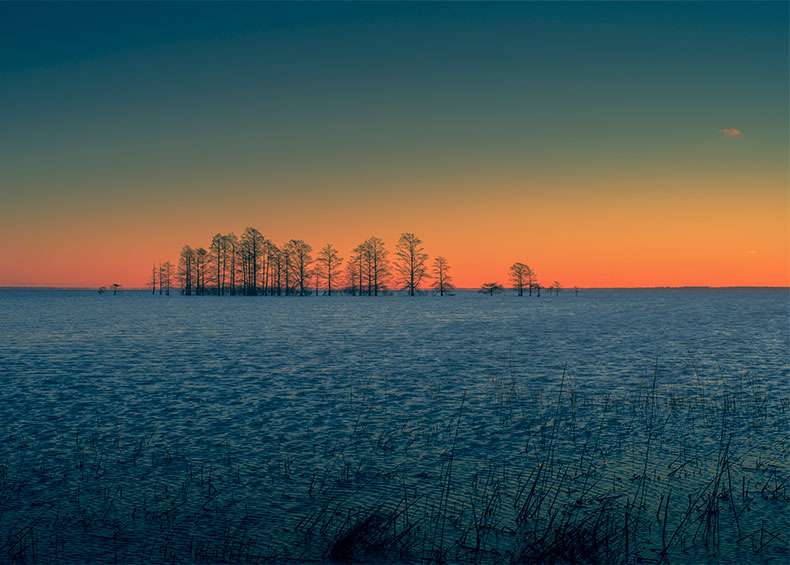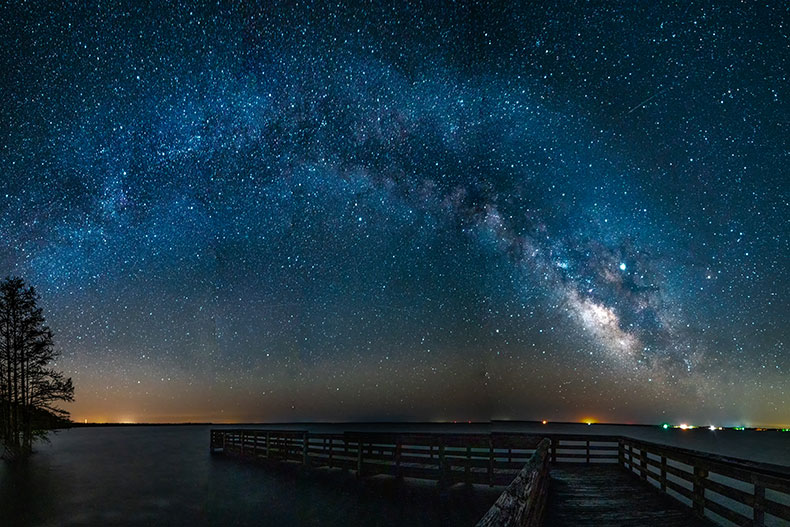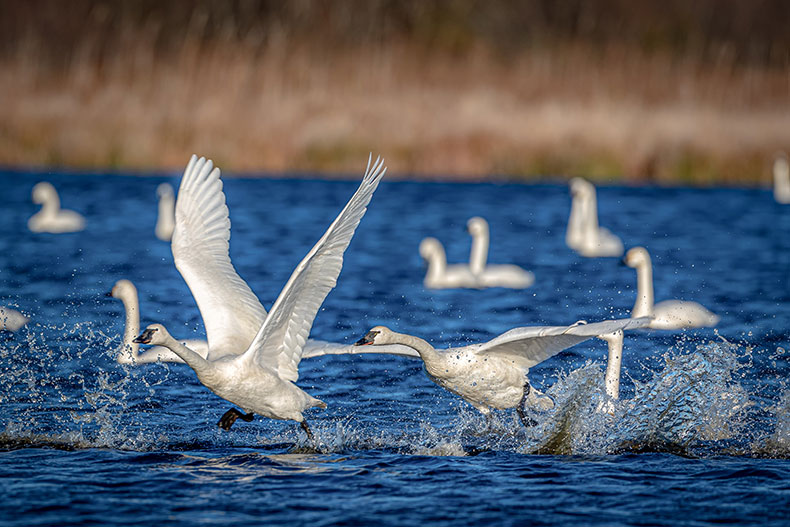While Tideland territory’s coastal shorelines are world renowned, we are also home to several notable lakes with two being the largest natural lakes in North Carolina. Fall is one of our favorite times to explore the lakes as migratory waterfowl begins to appear in abundance.
New Lake
New Lake in Hyde County is the least accessible of the four lakes in Tideland territory. Approximately 85% of the lake falls under the management of the Pocosin Lakes National Wildlife Refuge which also manages Pungo Lake. One primitive public access point is managed by the refuge. The rest of New Lake is privately owned. The lake covers nearly 5,000 acres large.
More information: fws.gov
Mattamuskeet: Mainland Hyde County’s crown jewel
Lake Mattamuskeet is North Carolina’s largest natural lake measuring 18 miles long and 7 miles wide. Despite its size, Mattamuskeet’s average depth is eighteen inches which has historically promoted active growth of aquatic vegetation. As a result it has annually been the winter home to hundreds of thousands of tundra swan and other migratory waterfowl.
Managed by the US Fish and Wildlife Service, the lake and its surroundings are teeming with wildlife including 240 bird species. You are just as likely to see a wildlife photographer as you are a fisherman while traversing the lake’s causeway.
The refuge is also home to Mattamuskeet Lodge which originally served as a pumping station when the lake was drained in the 1910s and ‘20s so its fertile bed could be farmed. Eventually the station was be converted into a world-renowned hunting retreat until 1974 when migratory bird populations plummeted. The lodge has since been stabilized but funding for renovations has largely stalled.
More infomation: fws.gov and mattamuskeetlodge.com
Lake Phelps: North Carolina’s second largest natural lake
Lake Phelps, located in Pettigrew State Park, is the most recreationally friendly of the four lakes in Tideland territory. The lake’s surface area is 16,699 acres with an average depth of 4½ feet. Maximum depth is nine feet.
Scientists are still puzzled as to how the lake formed but it continues to be an ecological wonder. Its remarkable water quality is credited with preserving ancient Native American canoes, one of which was radiocarbon dated to 2,400 B.C.
Families can enjoy swimming, boating and fishing in Lake Phelps’ shallow, crystal clear waters. There are also 4.1 miles of walking trails. State historic site, Somerset Place, also overlooks the lake. Do not depend on GPS to locate the park’s office. From U.S. 64, take exit 558 and follow the signs for approximately 8 miles to the park office.
Tideland provides electric service to the portion of Lake Phelps that lies within Washington County. There you will find Conman’s Hunting Guide Service and Vacation Cottages. Check them out on Facebook. They post incredible wildlife trail cam photos.
More information: conmans.homestead.com and ncparks.gov
Pungo Lake
In many ways, Pungo Lake has flown under the radar, dwarfed by the notoriety of its larger cousin, Lake Mattamuskeet. But Pungo Lake has bragging rights of its own with an annual birding population that at times seems to entirely cover the 2,800 acre lake.
Part of the Pocosin Lakes Wildlife Refuge it is also one of the best areas to observe black bear thanks to a Cooperative Farming Program that allows local farmers to produce crops on the refuge. Rather than pay rent, the farmers agree to leave a portion of corn standing in the fields for waterfowl and other wildlife to consume.
The Pungo Unit has five designated observation points including a lake platform that can be accessed after a half mile stroll on the Duck Pen Wildlife Trail. Please note that pets are not allowed on the trail.
The best time to visit Pungo Lake and the surrounding refuge is November through February. Because the Pungo Unit is open to deer hunting, visitors are encouraged to exercise extra caution by staying on roads and in open areas.
More information: fws.gov

